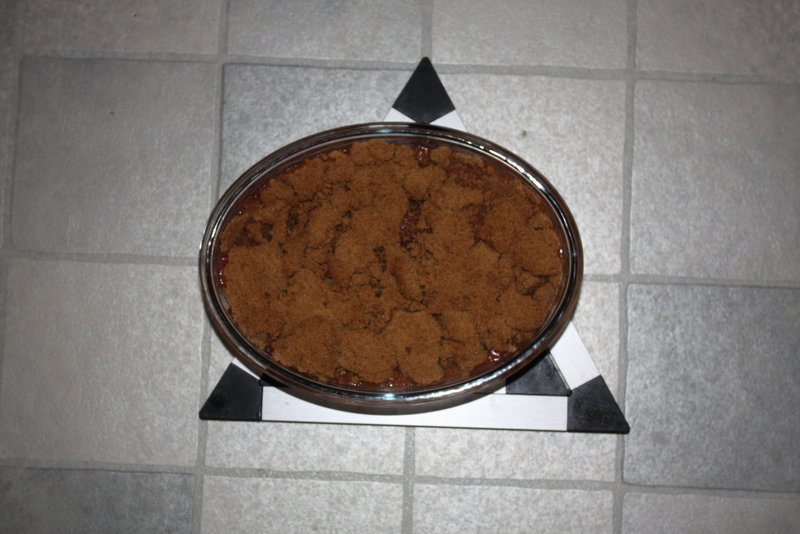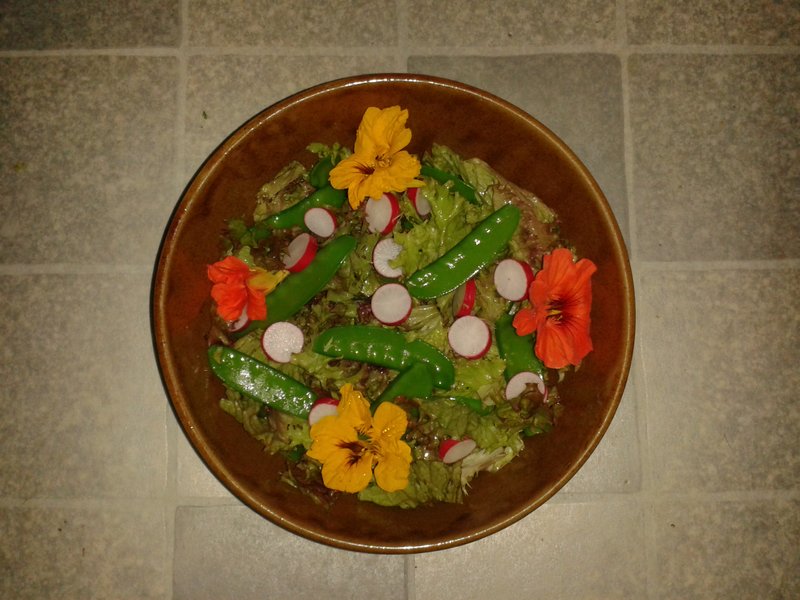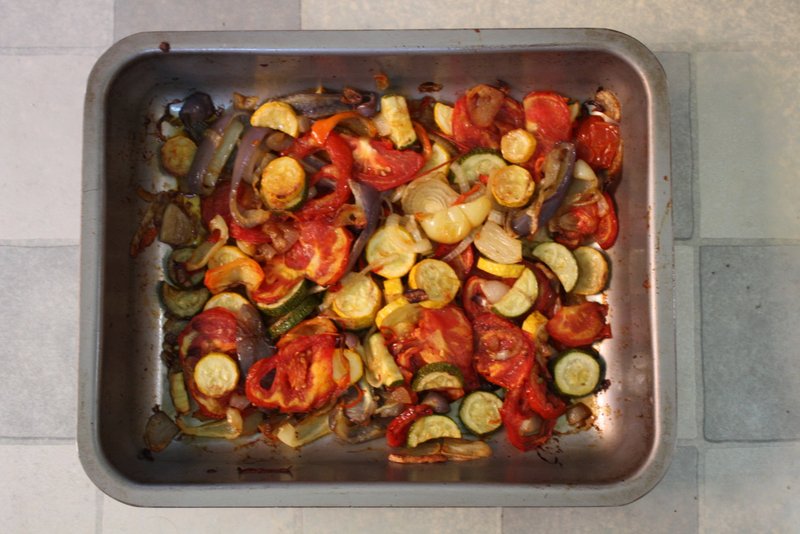Despite the fact there have been mumblings about whether or not amateurs should grow potatoes (a sentiment with which we wholly disagree by the way), they are a key part of many allotments and vegetable gardens and a well managed crop can provide a staple that will last throughout the year.
Domestic potato harvesting usually takes place between early June and late September, with a general rule of thumb being that the later crops are the varieties that will store for the longest. Potatoes are easy to store, they simply need to be kept in a dry, cool (but frost-free) and dark place. The usual method is to keep them in sacks (either hessian or paper) in a garage, cellar or similar place. Do make sure that they are also protected from rodents.
Some people suggest that it is not necessary to clean potatoes prior to storage, but we strongly recommend that you do. The main reason for this is that the process of cleaning them provides an opportunity to inspect them properly and then sort them into those that are suitable for keeping (no damage, no signs of pests such as slugs and no signs of disease). The “one bad apple” adage applies just as much to potatoes as anyone who has discovered a sack of largely rotten tubers will testify. Storing only the sound potatoes is the first step towards having a crop that will keep. We also recommend inspecting your stored tubers every 4-6 weeks while tey are in storage and removing any that show signs of deterioration so that you can use them promptly.
Using this approach, the potatoes that we had stored in our garage lasted until mid-April last year and having put less ground aside for them in 2012 we expect to finish off the last of the current crop in mid-March. Over the two years we have lost barely a handful of stored tubers to disease and the regular checking has meant that these have not had time to infect the others. We transfer them to the kitchen in small batches so that we don’t have to nip out every time we want a spud. The photo below shows that last year’s ‘Rudolph’ potatoes are still in good shape.
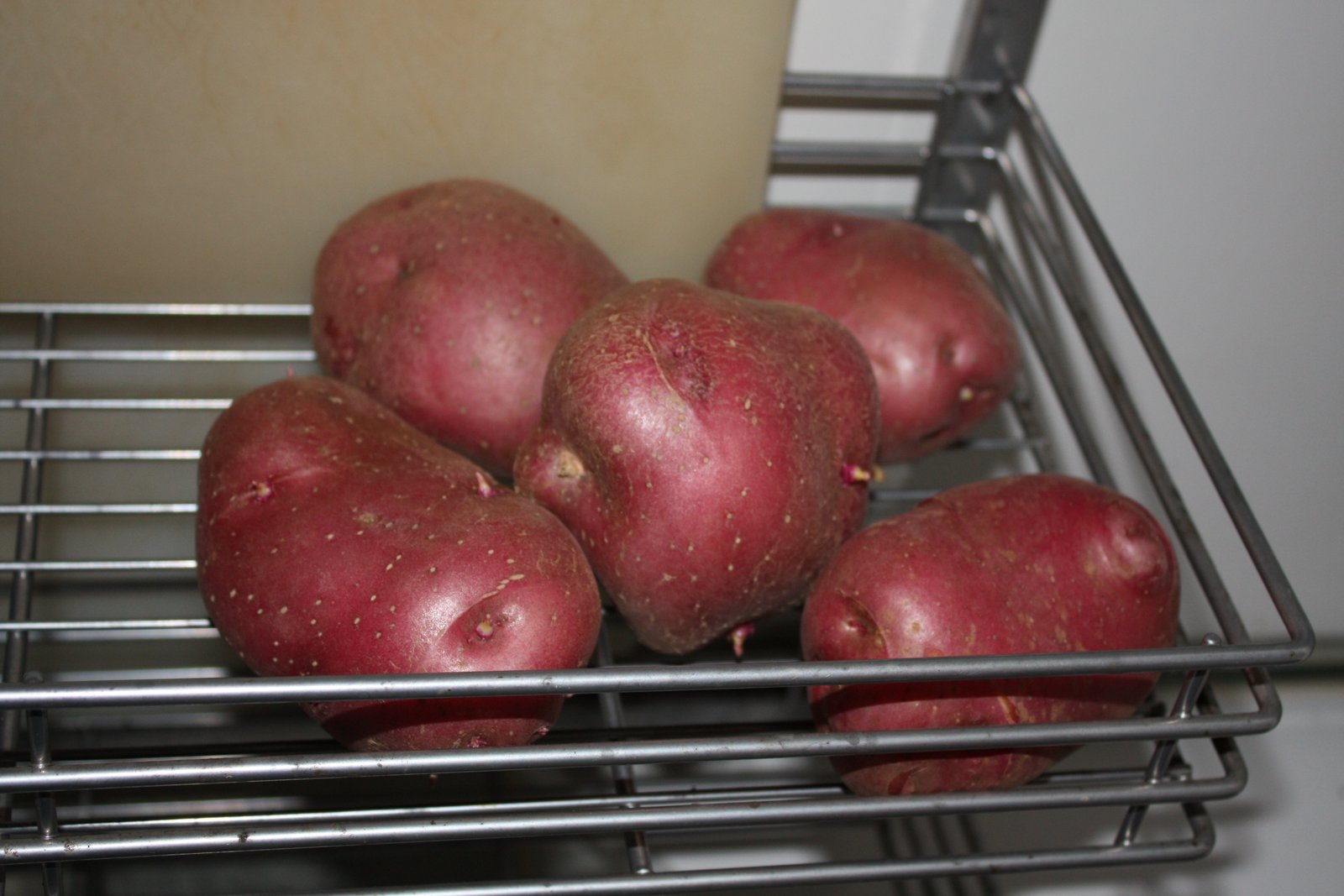
Rudolph potatoes 26 Feb
So far so good, but who grows a crop that is comprised only of sound, disease and pest free tubers? Well not us that is for sure. This means that at harvest time there is going to be a glut and this is most likely to come when you harvest the main crop varieties (grown for storage) and the last of the earlies (which won’t store that well anyway).
The first thing that you can do is to eat the tubers that are not good enough for storing, but bear in mind that you may well have been enjoying “new potatoes” for a couple of months by this time and that in the rare event of a British summer, you might not be ready to move onto winter fare like baked or mashed spuds. Another outlet is friends and family, ours are certainly grateful for gifts of fresh potatoes that may only keep for 3-4 weeks, but will be eaten far more quickly than this.
If, like us, you are trying to move to a situation where you don’t have to buy potatoes any more (we last bought some in the spring of 2011) then you probably want to make the most of of your crop, so alternate methods of preservation are important. To this end we invested in a deep freeze for the garage last summer, which opened up the opportunity to store potatoes in cooked form, where the options are legion
Probably the easiest way to freeze potatoes is to cook them and mash them and we have a few tubs of mash stored away, but a bit more work can give you corned beef has or colcannon (essentially mashed potato and cabbage, but with other ingredients and seasoning to personal taste).
Moving further up the effort scale are the dishes that are topped with mash – cottage pie, shepherds pie and fish pie are all classics. In terms of time, economies of scale really pay off here. It takes almost the same amount of time to prepare half a dozen of these as it does to produce one, and who wouldn’t want a “ready meal” of known provenance at the moment.
A household favourite is stuffed baked potatoes and again making a batch takes little more time than cooking a couple for dinner. The process is simple; bake the potatoes while preparing the other ingredients for stuffing. When the potatoes are fully cooked, scrape out the centres, mix with the other ingredients and stuff the resultant mix back into the skins. Once the potatoes are cooled they can be frozen, either individually wrapped or in plastic containers such as ice cream tubs.
The flavouring need only be limited by your imagination, some of our favourite ingredients include grated hard cheese (Cheddar, Red Leicester, Double Gloucester), onion, bacon, chorizo, smoked salmon, canned tuna, cream cheese, sweet peppers and herbs. A combination that produces real comfort food in the depths of winter is chorizo, cheese and onion. Careful selection of ingredients mean that stuffed potatoes work just as well for vegetarians as omnivores.
Another option that has worked for us has been to make chips. Part cooking them (deep frying), drying them off and then freezing in batches once they are cool, provides frozen chips ready for deep frying or oven baking at your leisure. A deep fat fryer is a clean way of cooking chips, but we don’t have one, so our biggest heavy-bottomed pan comes into play and the hob gets a wipe down afterwards.
We have also found a way to use those potatoes that are sound but seem to be too small to be useful. A roasting dish of hot oil with a bit of salt and pepper and a whole batch of “baby roast potatoes” can be prepared and then used a handful at a time. Indeed after writing this I think that a couple of handfuls will be coming out tonight to go with some cold pork and pickles (more of them later in the year, but for now here are the remnants of last year’s efforts).
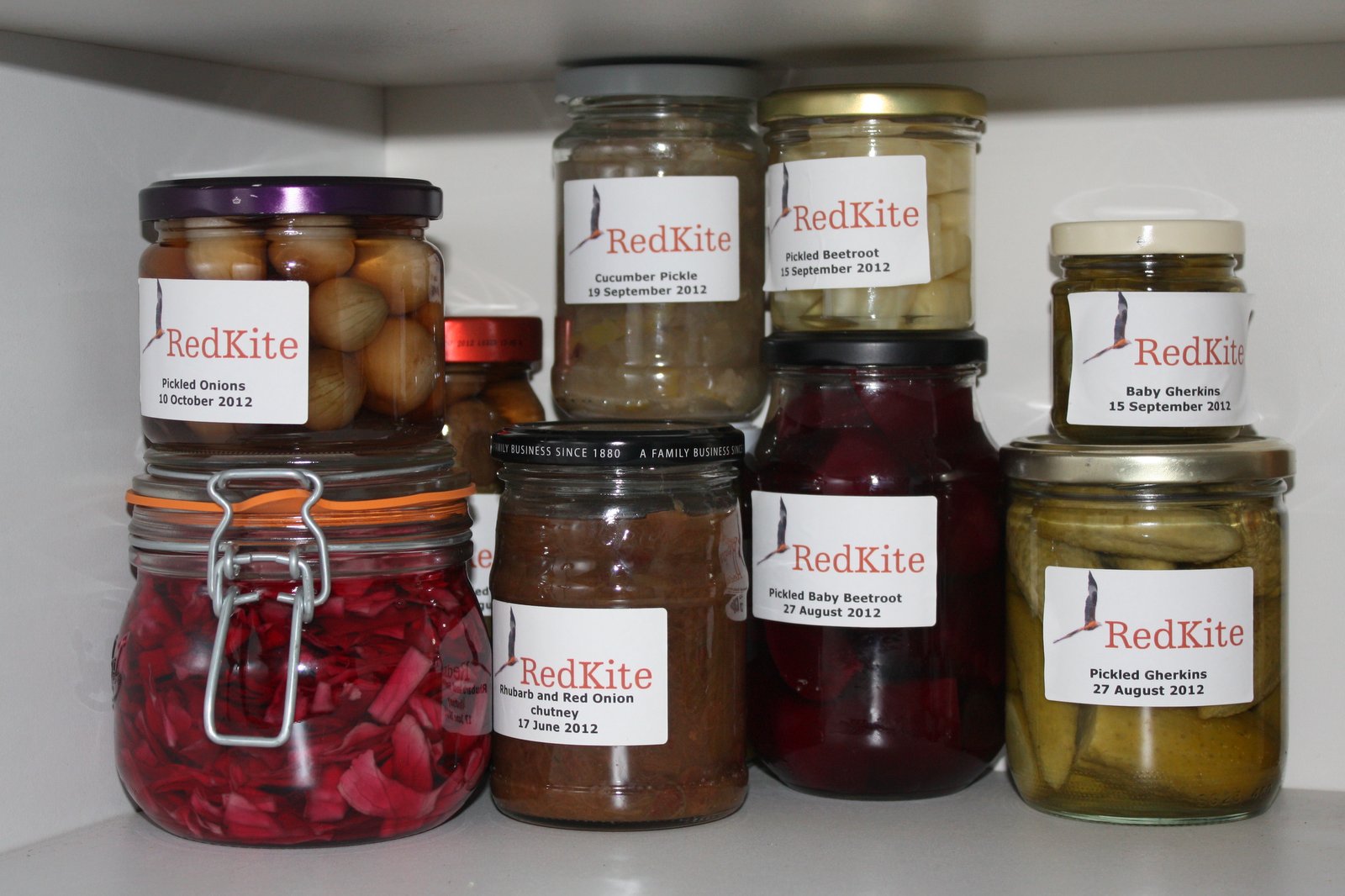
Last year's pickles
The final thing that we have tried is soup-making. Potatoes make a nice base for a variety of soups, but one of our favourites is simple potato and leek.
Our potato and leek soup – all measures approximate
- Peel and chop 1Kg (2.2 lb) of potatoes.
- Boil the potatoes in 1.5 Litres (2.5 pints) of water.
- When the potatoes aresoft, roughly mash (in the water) and then liquidise (a hand held blender will do this easily).
- Finely slice 250g (8oz) of leeks, including both green and white parts.
- Stir the leeks into the soup mix and cook for 10 minutes to soften the leeks.
- While cooking the leeks add flavourings to taste (e.g. rosemary, salt, pepper, cream). Keep tasting to get a flavour you like.
- Cool and freeze – remembering to leave some space in the container as the soup will expand as it freezes.
Other ingredients can be added to make a more luxurious soup, smoked haddock works very well as does boild ham, where the boiling water could be used as the soup base. Equally, a chicken or vegetable stock could be used instead of water to give a richer flavour. As with so much cooking your imagination is the only limiting factor.
To finish here are some of our stores.
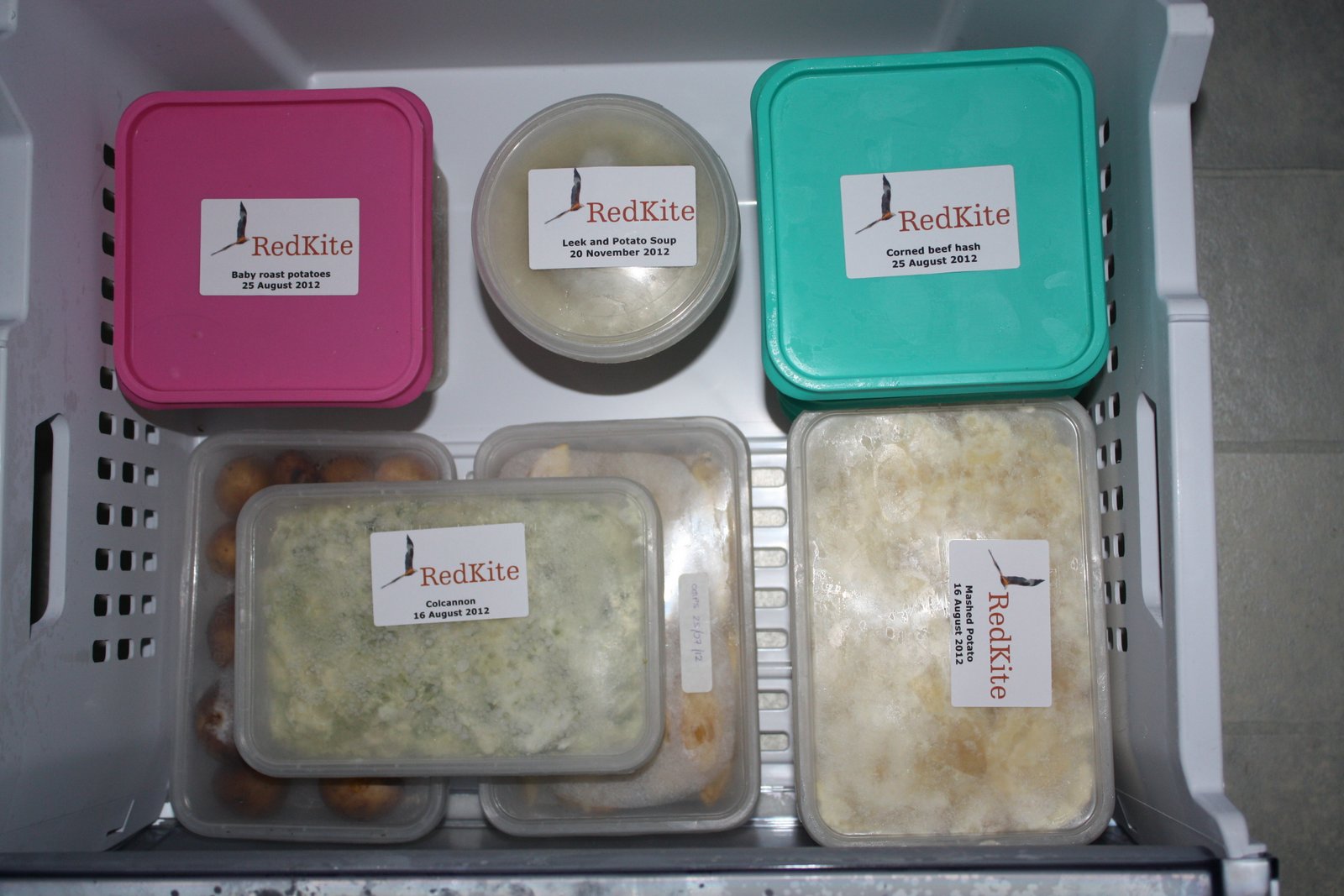
Assorted frozen potato dishes
Who doesn’t want to grow potatoes now?

